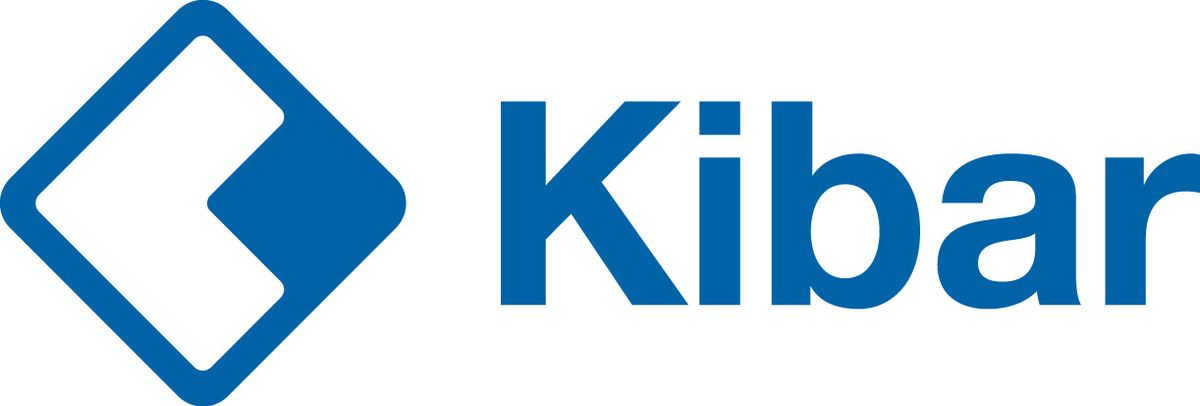So far we have assisted over 400 companies.








In this summary, we would like to present the differences between the old and the new KATA taxation system, as well as the transitional provisions, so that the transition to the new KATA taxation and the abandonment of KATA taxation until 08.31 can be properly handled.
As of September 1, 2022, the kata taxation form will be significantly changed.
The most important change is that the NEW KATA taxation can only be applied by sole proprietors from 09.01, so sole proprietorships, KKT, BT and law firms are excluded, as well as those special tax subjects (e.g. individual lawyers, notaries, self-employed bailiffs, individual patent attorney, veterinary service providers).
So far we have assisted over 400 companies.







The other most important change is that only full-time self-employed individuals can be subject to the KATA tax, so the NEW KATA will not be applicable in legal relationships with “side, part time jobs” as of 09.01. The amount of the kata itemized tax will remain at HUF 50,000 per month, but the part-time kata tax (HUF 25,000) and the increased kata tax (HUF 75,000) will be abolished.
You will be able to invoice only individuals, (Hungarian and foreign) but no entities or any businesses at all. In this case please notify your clients upfront that you will be able to give invoice to private persons
According to the current legislation, after August 31st, everyone will no longer be subject to tax for their previous kata, even if they will be entitled to kata based on the new law.
Contents
The annual amount of the kata frame also changes. Calculation of the tax limit if the entrepreneur is an “old” tax subject on August 31: number of active months * HUF 1.5 million, i.e. if the entrepreneur has been continuously operating as a tax subject since January 2022, then January – August 31, 2022, the kata limit for the period 8 * 1.5 million HUF = 12 million HUF. The calculation of the kata limit for the entrepreneur who chooses “new” kata taxation from September 1, 2022 is also = number of active months * 1.5 million HUF. According to our interpretations so far, so if on August 31 the business is no longer subject to KATA, because it closed its business earlier or changed its tax status (and it is not taxed in August), then the previous limit still applies, i.e. number of active months * HUF 1 million. ( in all cases be careful that non- VAT limit is still only 12 million a year)
Cancel it before August 31st so that the 12 million frame can be used.
The new kata law abolishes the 40% tax over HUF 3 million introduced in
2021, but this payment obligation remains until August 31, 2022.
Submission of a final tax declaration is required.
According to the current legislation, after August 31st everyone will no longer be subject to the tax of the previous kata rules, even if they will be entitled to kata based on the new law. The previous kata period must be closed with a final tax declaration, the deadline of which will probably be at the end of September (there are no regulation regarding the deadline yet). According to our current assumptions, it will not be necessary to submit a final return if the business was closed for the entire year and no income was received in 2022.
It is IMPORTANT that those old KATA taxpayers who can/want to apply the provisions of the NEW KATA as of 09.01 are given the opportunity to register between 08.01 and 09.25 2022.
Who can’t be on KATA taxation from September 1, 2022
The subject of the “new” kata tax can only be the main “full-time” self- employed.
In addition, self-employed individuals who have not yet been classified as full-time taxpayers will also be excluded from the “new” category of tax payers.
As of September 1, 2022, the subject of the kata tax cannot be those who, for the entire month are:
You can switch to flat-rate taxation – GTR if your business income in the previous tax year did not exceed ten times the annual minimum wage (HUF 20,088,000).
The rules of flat-rate taxation – GTR can be applied as long as the entrepreneur’s income does not exceed HUF 24 million in the given year, or HUF 120 million in the case of retail activity ( retail only, including webshops).
In the case of flat-rate taxation, income is not calculated by true cost accounting, but by the application of cost ratios. Depending on the activity, your cost ratio can be 40, 80 or 90%.
Important! An individual entrepreneur who starts, terminates or pauses his activity during the year can take the value limit into account in proportion to the days of the activity’s continuation.
Taxed income can be calculated as follows = income – (income * expense ratio).
It is important that if you carry out several activities that do not belong to the same cost ratio in flat taxation, you must apply the lower cost ratio to all your activities.
Ex. You have a retail business, but also you give consultancy on IT – then you have to go with 40 % expense ratio for all the income.
As a self-employed person with your main occupation (full time), you must pay the SZOCHO (social contribution) and the TB (health security) contribution after the minimum tax base every month, even if you have no income.
As a flat-rate taxpayer as a second, part-time job (e.g. a full-time student, working more than 36 hours a week as employee), you do not have to pay social contribution tax and social security contributions at least after the minimum tax base, but only after your actual income.
If the sole trader’s main activity requires at least a secondary education or secondary vocational qualification, the minimum wage shall be understood as the monthly amount of the guaranteed minimum wage valid for full-time work on the first day of the month in question. In 2022, the minimum wage is HUF 200,000 per month, and the guaranteed minimum wage is HUF 260,000.
SZJA: remaining after the specified cost ratio – in the case of 40% it is 15% after 60% of the income.
18.5% after the flat-rate taxed income. If the flat-rate taxed income does not reach the minimum wage or the guaranteed minimum wage, then 18.5% of the minimum wage or the guaranteed minimum wage. In 2022, this is HUF 37,000 or HUF 48,100.
13% after the flat-rate taxed income. If the flat-rate taxed income does not reach the minimum wage or the guaranteed minimum wage, then the minimum wage or guaranteed minimum wage x 112.5%, and 13% of this. In 2022, this is HUF 29,250 or HUF 38,025.
The form of taxation according to the SZJA is the most complicated form of accounting, since both costs and income require very detailed documentation, only expenses connected to the activities can be counted as expense. . The rules on what you can have as expense are very strict. You have to have invoices for your expenses. Ex: having a car –you will have to pay monthly car tax. Premises – you can have expense if you have an office, the rental contract has to be on the name of the company or your business – which means that it has to be a seat or the official address registered with tax office- which will mean that the cost of utilities will be based on business fees, not individual and so on). The food and drinks you could provide for your clients will be taxed, etc. As you can see the range of expenses is very limited and taxed.
Also an extra dividend tax is payable in addition to the SZJA and contributions. Based on these, this is the least suitable and recommended form of taxation for most sole proprietors, especially sole proprietors providing services, as they rarely have more than 40% of actual costs that can be accounted for in their business. If you decide to go with this taxation form, have a consultation with an expert.
Gurcan Partners is a Law and the Consulting firm. Our professional team can assist you at all steps of incorporation and investment process in Europe.
WORKING NEXT TO YOUR STUDIES
Who were doing KATA next to their studies, will not be able to do it anymore.
For people who were on KATA taxation as full time students – after 1st of September they can choose to do it on GTR taxation or can do it through the membership of the student organizations. You are insured by your studies – so you do not need to pay taxes (TB contribution) if you are a full time student and have a TAJ number. If you are under 25 years old, you do not need to pay 15 % SZJA (PIT- personal income tax) – up to 433 700 HUF/ month income. For taxes the student organization will deduct and pay your PIT and declare it to the tax office. You will have to make an annual tax declaration (till next year May).
If the student organization employs a student during the summer break who has already completed his or her primary school education or graduated from college or from university, then you also do not have to pay a contribution, since the student card is still valid until October 31 following the end of the academic year (this is in case your residence permit for studies is valid).
For example: your January income was HUF 1,500,000:
TB: HUF 200,000 x 18.5% = HUF 37,000
SZOCHO: (200,000 HUF x 112.5%) x 13% = 29,250 HUF
Your monthly profit for January is =1,500,000-(37,000+29,250)=1,433,750 HUF
For example: your income in March is HUF 1,500,000 and in the first 2 months you exceeded the exemption limit of HUF 2,000,000 income (1,200,000 taxed income), then the taxes:
HUF 900,000 x 15% = HUF 135,000
TB: HUF 900,000 x 18.5% = HUF 166,500
SOCHO: 900.00 x 13%=117.00 HUF
Your monthly profit in March is thus = 1,500,000-(135,000+166,500+117,000) = HUF 1,081,500
Self-employed flat-rate taxpayers with part-time jobs are only required to pay SZJA, TB contributions and SZOCHO after the income determined in the taxable flat rate, so in the month of January the income determined in the flat rate is still tax-free, the taxable income determined in the flat rate is HUF 0, i.e. there is no SZJA obligation. For this reason, the base of the SZOCHO and the base of the TB contribution are HUF 0, i.e. neither the SZOCHO nor the TB contribution have to be paid.
Retired self-employed on GTR taxation only have to pay SZJA. For them, therefore, the income established in the total tax-free flat rate will be tax- and contribution-free.
○ If you did not have to pay anything in the given month, because you are a flat-rate taxpayer with a part-time job and you had no income, you must also submit the tax return with zero.
DEADLINE FOR PAYMENT AND DECLARATION OF TAXES AND CONTRIBUTIONS
SZJA Payment: quarterly, until April 12, July 12, October 12 and January 12, but monthly is preferable
TB and SZOCHO – every month until 12
Chamber of Commerce fee: within 5 days of registering the business. Until March 31 of the following year
Business tax: until March 15 and September 15